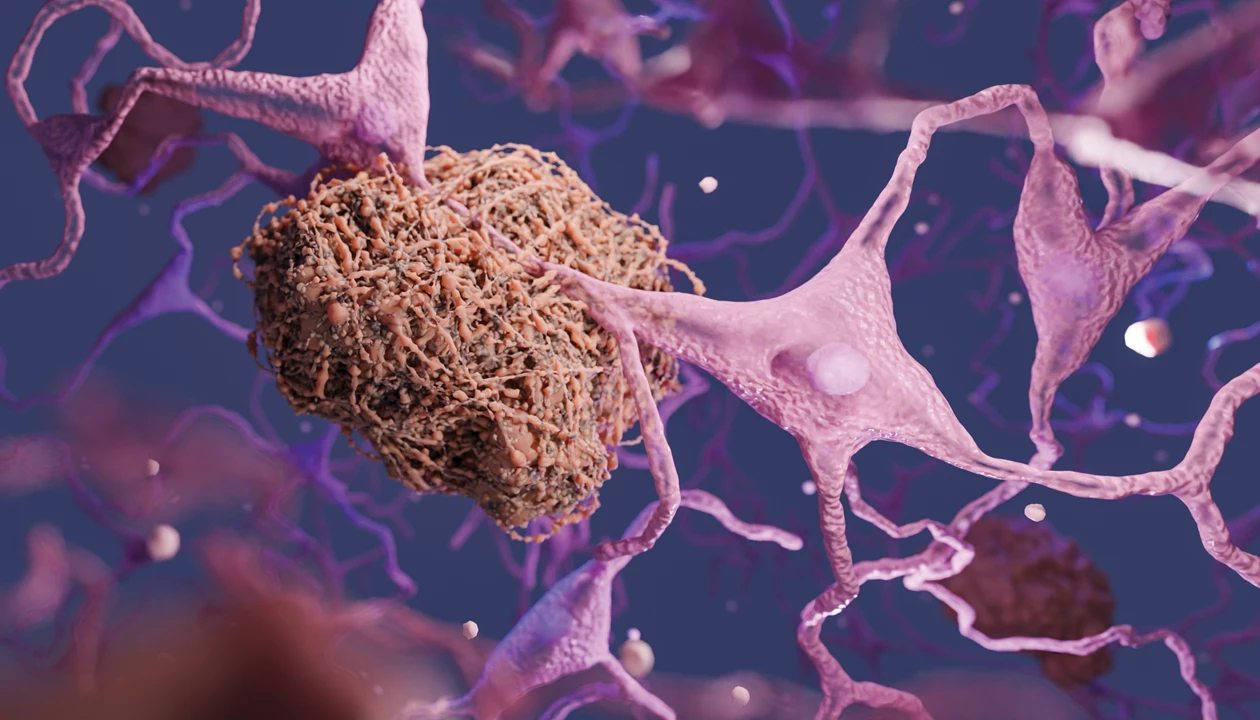Researchers led by Bruce Yanker, codirector of the Paul F. Glenn Center for Biology of Aging Research and a professor of genetics and neurology at Harvard Medical School, have found that lithium in the brain plays an early role in Alzheimer’s disease progression, and the disease can be reversed in mice by providing a different form of the metal (Nature 2025, DOI: 10.1038/s41586-025-09335-x).
The brain changes during the progression of Alzheimer’s: amyloid-β proteins clump together to form plaques, a protein called tau tangles together stopping neuron communication, and neurons die. All these changes lead to a brain that misfires, but the changes that start this cascade of events are still unclear.
Research has shown that heavy metals could be an early contributing factor. But understanding their impact has been hindered by analytical techniques that can’t detect small amounts in the brain.
In the new study, Yanker’s team used a highly sensitive mass spectrometry technique to detect metals at extremely low concentrations in samples taken from different parts of brains postmortem. They found lower lithium concentrations in the prefrontal cortex of human brains with Alzheimer’s or mild cognitive impairment, and lower levels of the metal correlated with worse cognitive function.
But the lithium hadn’t vanished from the body. Instead, it was being trapped by amyloid plaques.
“They showed a very striking sequestration of lithium by plaques,” says Li-Huei Tsai, director of the Picower Institute for Learning and Memory at the Massachusetts Institute of Technology, who was not involved in the study. “This likely represents a piece of [the Alzheimer’s] puzzle.”
To understand the role the metal has on brain function, the researchers turned to mice. The team gave healthy mice a lithium-deficient diet. Those on the meal plan had more plaque formation, faulty tau, and neuron inflammation. In every major brain cell type, genes important to neuronal function were also dysregulated, and the neurons themselves had less myelin, a critical component of brain signaling.
Since amyloid plaques sequester lithium, the team reasoned that administering more of the metal wouldn’t necessarily solve the problem. The team instead looked for a way to get the metal to the brain in a way that wouldn’t interact with the plaques.
Lithium orotate, a salt formed from lithium ions and orotic acid, evaded plaque capture, and in mice models with Alzheimer’s given lithium orotate at physiological concentrations, plaque formation decreased, gene expression returned to normal, and memory improved—even in animals in later stages of the disease.
The supplemented lithium orotate showed no signs of toxicity in the mice.
Most lithium research has focused on specific pathological and cellular responses, but “the most interesting and intriguing aspects of what we found is that lithium cuts across all these domains,” Yanker says. “It is a potential common mechanism for multisystem degeneration.”
It’s still too early to tell if the results will hold up in humans, and Yanker warns no one with Alzheimer’s should change their medications based on this work, yet he remains hopeful that it could be a new way to not only treat Alzheimer’s but mitigate some of the side effects of aging.
Chemical & Engineering News
ISSN 0009-2347
Copyright ©
2025 American Chemical Society
